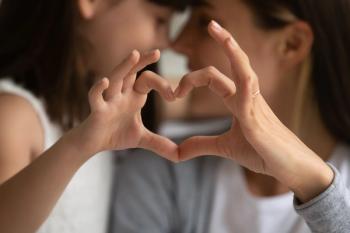
- Drug Topics August 2022
- Volume 166
- Issue 8
Probiotics for the Prevention of Pediatric Antibiotic-Associated Diarrhea
Evidence of the relationship between probiotics and antibiotics is lacking.
Diarrhea is a common adverse effect of antibiotics, affecting 11% to 40% of children treated with broad-spectrum antibiotics.1 Antibiotic-associated diarrhea (AAD) may occur when anti biotics disrupt the normal balance of the gut flora, causing harmful bacteria to multiply and destroy the gut microflora.1 Probiotics restore the natural balance of gut flora through the introduction of nonpathogenic bacterial or yeast microbiota and have been used in clinical trials and in practice to manage AAD in children.2
Probiotics are generally well tolerated in healthy children, with minor adverse effects being dyspepsia, abdominal pain, nausea, and bloating.3 Probiotics should be avoided in children who are immunocompromised or severely debilitated.4 Likewise, probiotics must be used with caution in specific populations such as premature infants, critically ill patients, and patients with a central venous catheter, cardiac valvular disease, and short-gut syndrome.5 Although evidence supporting a clinically meaningful interaction between probiotics and antibiotics is lacking, the use of antibiotics could theoretically eradicate the microorganisms contained in the probiotics. Therefore, it has been suggested to space the administration of probiotics from antibiotics by 2 hours.3,6
Because antibiotics are commonly used in the pediatric population, we sought to examine the evidence concerning the use of probiotics for the prevention of pediatric AAD. After applying search criteria, 7 relevant articles were identified, which are summarized below.
Clinical Data
Shan et al described an open label, randomized, controlled trial involving 333 hospitalized children who were being treated with intravenous antibiotics.7 The study’s objective included an assessment of the efficacy of Saccharomyces boulardii, dosed at 500 mg per day, for the prevention of AAD. Patients were followed during and 2 weeks after antibiotic therapy. The primary outcomes related to the prevention of AAD were the frequency and duration of AAD. In this study, the use of S boulardii resulted in statistically significant fewer occurrences of AAD. The investigators concluded that using S boulardii was effective for the prevention of AAD in children.
Georgieva et al described a randomized, controlled study that examined the efficacy of Lactobacillus reuteri for the prevention of AAD.8 In this study, 100 hospitalized children aged 3 to 12 years were randomly assigned to receive a probiotic tablet containing 1 × 108 colony-forming units (CFU) L reuteri or placebo once daily during the antibiotic treatment period and for an additional 7 days. The primary study end point was the incidence of diarrhea during and up to 21 days post antibiotic treatment. The investigators found no statistically significant difference between the 2 groups but noted that because of the low incidence of AAD in both groups, no conclusion can be made about the efficacy of L reuteri for the prevention of AAD.
Fox et al described a randomized, double-blind, placebo-controlled study that examined the efficacy of a yogurt containing probiotics (Lactobacillus rhamnosus GG, Bifidobacterium lactis, and Lactobacillus acidophilus) for the prevention of AAD.9 In this study, 72 outpatients aged 1 to 12 years were randomly assigned to receive active yogurt or pasteurized yogurt (placebo) for the duration of their antibiotic treatment. The primary outcome was stool frequency and consistency. There were significantly fewer occurrences of diarrhea in the children who were given the probiotic-rich yogurt as compared with those receiving placebo. Also, more adverse events, including abdominal pain, loss of appetite, and nausea, were reported in the placebo group compared with the active group. The investigators concluded that the specific probiotic-rich yogurt used in the trial was an effective intervention for reducing the incidence of antibiotic-associated gastrointestinal disturbance in children.
Olek et al described a randomized, double-blind, placebo-controlled study that examined the efficacy of probiotics for the prevention of AAD in 438 outpatient children aged 1 to 11 years.10 Patients were assigned to receive a probiotic capsule containing 1 × 1010 CFU L plantarum or placebo once daily for the duration of antibiotic therapy and for 1 week after completion of treatment. The primary outcome was the incidence of antibiotic-associated loose/watery stools; the investigators found no statistically significant differences between the groups regarding this outcome. Furthermore, the incidence of children with at least 1 adverse event was significantly higher in the placebo group compared with the probiotic group. The investigators concluded that there was no beneficial effect of Lactobacillus plantarum for the prevention of AAD in children.
Kołodziej and Szajewska assessed the efficacy of L reuteri for the prevention of diarrhea and AAD in hospitalized children.11 The investigators randomly assigned 250 children younger than 18 years to receive L reuteri 2 × 108 CFU or placebo twice daily for the duration of antibiotic treatment. Primary outcome measures were the occurrences of diarrhea and AAD. The investigators found no statistically significant differences between the 2 groups in the primary outcome measures. Additionally, there were no statistically significant differences in adverse effects. The investigators concluded that the study provided no evidence to support the use of L reuteri for the prevention of AAD in children.
Wronowski et al described a prospective, randomized, double-blind, placebo-controlled study in a pediatric hospital.12 In this study, 156 children aged 1 to 18 years were randomly assigned to receive 100-mg bovine lactoferrin or placebo twice daily for the duration of antibiotic therapy. The primary outcome was the occurrence of AAD during treatment and up to 2 weeks after antibiotic therapy. The investigators found no statistically significant benefit for the probiotic and concluded that bovine lactoferrin was not effective for the prevention of AAD.
Esposito et al described a placebo-controlled study designed to evaluate the effectiveness of L rhamnosus GG for the prevention of AAD in children receiving antibiotic therapy postoperatively.13 The study consisted of 3 groups (probiotic, no treatment, and placebo), with 30 boys in each group. The overall incidence of AAD was statistically significantly lower in the probiotic group compared with the other groups. Also, the duration of AAD was statistically significantly longer in the control groups than the probiotic group. The investigators concluded that the use of L rhamnosus GG significantly reduced the incidence and duration of AAD in children.
Summary
Clinical trials evaluating the use of probiotics for the prevention of AAD in children yielded varying results. A systematic review that assessed the results of 33 randomized, controlled studies concluded that probiotics produced
a moderate reduction in the incidence of pediatric AAD, with a larger effect noted with high-dose probiotics (≥ 5 billion CFUs/day).1 Furthermore, probiotics reduced the duration of diarrhea by almost 1 day. Among the various probiotics evaluated, L rhamnosus (eg, Culturelle) or S boulardii (eg, Florastor) at 5 to 40 billion CFUs per day appeared to be most appropriate for preventing AAD in children. The authors of the systematic review also stated that it is pre- mature to draw firm conclusions about other probiotic agents.
Notably, there does not seem to be a consensus concerning the use of probiotics to prevent AAD in children as a standard of care. When making recommendations concerning the use of probiotics, pharmacists should follow evidence-based practices.
References
- Guo Q, Goldenberg JZ, Humphrey C, El Dib R, Johnston BC. Probiotics for the prevention of pediatric antibiotic-associated diarrhea. Cochrane Database Syst Rev. 2019;4(4):CD004827. doi:10.1002/14651858.CD004827.pub5
- Schrezenmeir J, de Vrese M. Probiotics, prebiotics, and synbiotics—approaching a definition. Am J Clin Nutr. 2001;73(suppl 2):361S-364S. doi:10.1093/ajcn/73.2.361s
- Probiotics. Natural Medicines. Updated March 10, 2022. Accessed May 31, 2022.
http://naturalmedicines.com/ - Salminen MK, Rautelin H, Tynkkynen S, et al. Lactobacillus bacteremia, clinical significance, and patient outcome, with special focus on probiotic L. rhamnosus GG. Clin Infect Dis. 2004;38(1):62-69. doi:10.1086/380455
- Hojsak I, Fabiano V, Pop TL, et al. Guidance on the use of probiotics in clinical practice in children with selected clinical conditions and in specific vulnerable groups. Acta Paediatr. 2018;107(6):927-937. doi:10.1111/apa.14270
- Williams NT. Probiotics. Am J Health Syst Pharm. 2010;67(6):449-458. doi:10.2146/ajhp090168
- Shan LS, Hou P, Wang ZJ, et al. Prevention and treatment of diarrhoea with Saccharomyces boulardii in children with acute lower respiratory tract infections. Benef Microbes. 2013;4(4):329-334. doi:10.3920/BM2013.0008
- Georgieva M, Pancheva R, Rasheva N, Usheva N, Ivanova L, Koleva K. Use of the probiotic Lactobacillus reuteri DSM 17938 in the prevention of antibiotic-associated infections in hospitalized Bulgarian children: a randomized, controlled trial. J of IMAB. 2015;21(4):895-900. doi:10.5272/jimab.2015214.895
- Fox MJ, Ahuja KD, Robertson IK, Ball MJ, Eri RD. Can probiotic yogurt prevent diarrhoea in children on antibiotics? A double-blind, randomised, placebo-controlled study. BMJ Open. 2015;5(1):e006474. doi:10.1136/bmjopen-2014-006474
- Olek A, Woynarowski M, Ahrén IL, et al. Efficacy and safety of Lactobacillus plantarum DSM 9843 (LP299V) in the prevention of antibiotic-associated gastrointestinal symptoms in children-randomized: double-blind, placebo-controlled study. J Pediatr. 2017;186:82-86. doi:10.1016/j.jpeds.2017.03.047
- Kołodziej M, Szajewska H. Lactobacillus reuteri DSM 17938 in the prevention of antibiotic-associated diarrhoea in children: a randomized clinical trial. Clin Microbiol Infect. 2019;25(6):699-704. doi:10.1016/j.cmi.2018.08.017
- Wronowski MF, Kotowska M, Banasiuk M, Kotowski A, Kuzmicka W, Albrecht P. Bovine lactoferrin in the prevention of antibiotic-associated diarrhea in children: a randomized clinical trial. Front Pediatr. 2021;9:675606. doi:10.3389/fped.2021.675606
- Esposito C, Roberti A, Turrà F, et al. Frequency of antibiotic-associated diarrhea and related complications in pediatric patients who underwent hypospadias repair: a comparative study using probiotics vs placebo. Probiotics Antimicrob Proteins. 2018;10(2):323-328. doi:10.1007/s12602-017-9324-4
Articles in this issue
over 3 years ago
Managing ADHD in Children and Adultsover 3 years ago
At a Glance: Interim COVID-19 Immunization Scheduleover 3 years ago
Vivjoa Approved for Recurrent Vulvovaginal Candidiasisover 3 years ago
Pharmacists Fight to Take on Opioid Use Disorderover 3 years ago
What's Coming in the 2022-2023 Flu Seasonover 3 years ago
Pendulum Ping Pongover 3 years ago
Become the Pharmacy of the Future With Technology SolutionsNewsletter
Pharmacy practice is always changing. Stay ahead of the curve with the Drug Topics newsletter and get the latest drug information, industry trends, and patient care tips.





























































































































